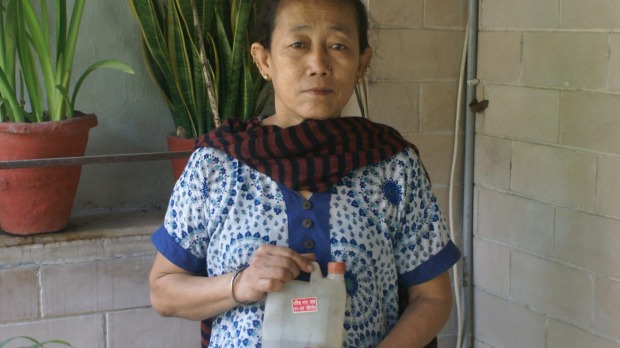
New Delhi: The Indian government believes it has found a new revenue source: it will bottle and sell water from the holy, and filthy, Ganges River online.
For years the government has been racking its brains to save the national post office given email, mobile phones and courier services have almost killed letter delivery revenues.
The plan is to sell water from the holy river through a government portal to Hindus who can have a bottle of Gangajal (Hindus call the Ganges ‘Ganga’ and ‘jal’ is water) delivered to their homes by the postman.
On Monday, Ravi Shankar Prasad, who is minister for Telecom and IT but also heads the Postal Department, told journalists the idea killed two birds with one stone: it would revive the post office’s revenues while serving the ‘cultural needs’ of the people.
“I used to get enquiries asking why we can’t use the network of India Post to deliver Ganga water. I have directed the Department of Posts to utilise the e-commerce platform and make the arrangement for providing pure Gangajal from Haridwar and Rishikesh (holy places for Hindus) to people. They have assured [me] that they will take pro-active steps to address these cultural needs,” said Mr Prasad.
The idea makes business sense because the demand for Ganges water is phenomenal. Hindus believe that a dip in the waters of this river can cleanse them of all their sins. India’s longest river, the Ganges is an icon of the Hindu faith and revered by all Hindus without exception.
The only problem is that the Ganges is one of the dirtiest rivers in the world. Multiple government attempts to clean it have failed. It is more septic tank than river because, as it flows 2500 kilometres from the Himalayas through four states where 400 million Indians live, it passes through 100 towns and cities. The river absorbs all their human and industrial waste.
Experts estimate that more than 3 billion litres of untreated sewage from these towns are pumped into the river every day. Apart from sewage, waste from tanneries enters the water, adding high levels of chromium, arsenic and mercury.
At the ancient city of Varanasi, the Ganges receives an additional ingredient: human ash and flesh from the cremation areas known as ghats. The level of toxins and dangerous bacteria found in the river are 3000 times higher than what the World Health Organisation considers safe.
But none of this information has any effect on believers. Vishwambhar Nath Mishra is a 50-something priest at Varanasi who continues his childhood habit of bathing in the waters every morning. Knowing that it is swarming with fecal matter makes no difference to him.
Wherever Mishra travels, in India or abroad, he takes a small bottle of Ganges water with him.
“In the hotel bathroom, I fill the bath or bucket and add a few drops of Ganga water to purify it. Then I can start my day,” he says.
Farindra Choudhary, who works as a cook, has kept a bottle of Ganges water at home for 8 years.
“Since I can’t go very often to the Ganges, I keep this with me at home and use it on special religious occasions,’ she said.
It is this belief that prompts Mr Prasad to say “there is a huge demand for Gangajal”, especially among Hindus who live nowhere near the river. Every Hindu who bathes in the Ganges takes a bottle of the water home, to use during prayers or bathing.
“If I commit too much pap [sin], I will be able to purify myself with it,” said Ritu Bhatt, a maid in New Delhi who brought a bottle back with her from Varanasi last month after cremating her mother there.
Its other purpose is to purify Hindus of the “pollution” of having accidentally touched someone from the lowest caste.
“If a high-caste Hindu touches an untouchable, he has to purify himself by drinking a mixture of cow dung, cow urine, and Ganga water,’ says Bindeshwar Pathak, head of Sulabh International, an NGO that promotes the building and use of toilets.
Pathak says he was forced to drink this mixture as a child by his mother after he inadvertently touched a low-caste workman in the house.
Critics of the plan say that Prime Minister Narendra Modi is pushing a Hindu nationalist cultural agenda by promoting the sales of Ganges water. The government has already succeeded in persuading the UN to celebrate an International Yoga Day as “an invaluable gift of India’s ancient tradition”, as he put it in a speech to the UN. The first such day was celebrated last June. Many Indians see these ideas as an attempt to make Hinduism a global brand.
R.K. Sinha, head of India Post, has told Indian media the post office might partner with packaging companies for bottling the water. India Post is the biggest postal network in the world with almost 155,000 offices. It will make the bottles available for sale in stores and through home delivery.
Radha Gupta, a gym instructor in New Delhi, a devout Hindu, was bewildered by the timing of the plan. “Of course it will be good for the post office but wouldn’t it have made more sense for the government first to clean the Ganga and then sell the water?”
Should the plan come to fruition, the government will face competition from online retail giant Amazon India. On sale on the site are bottled Ganges water in brass containers for “holy purposes” for 401 rupees (odd numbers are considered auspicious), as well as several options in plastic bottles. Prices start at about $8 “for the container”, not for the water.
Source:The Border mail

Im obliged for the blog post.Much thanks again. Great.
Very good blog article.Really thank you! Fantastic.
Really informative blog.Really looking forward to read more. Keep writing.
I truly appreciate this blog post.Really looking forward to read more. Really Great.
I really enjoy the article post.Really thank you! Great.